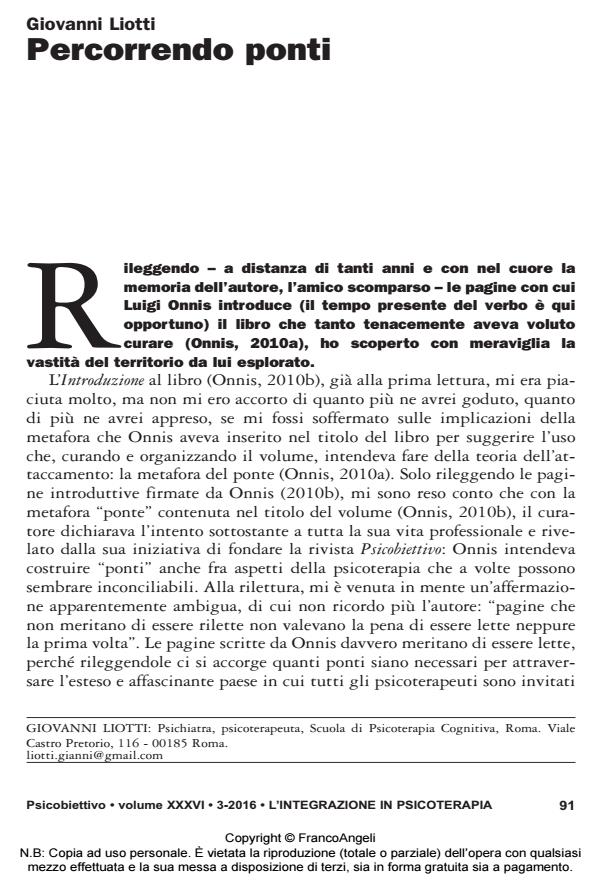Percorrendo ponti
Titolo Rivista PSICOBIETTIVO
Autori/Curatori Giovanni Liotti
Anno di pubblicazione 2016 Fascicolo 2016/3
Lingua Italiano Numero pagine 6 P. 91-96 Dimensione file 85 KB
DOI 10.3280/PSOB2016-003005
Il DOI è il codice a barre della proprietà intellettuale: per saperne di più
clicca qui
Qui sotto puoi vedere in anteprima la prima pagina di questo articolo.
Se questo articolo ti interessa, lo puoi acquistare (e scaricare in formato pdf) seguendo le facili indicazioni per acquistare il download credit. Acquista Download Credits per scaricare questo Articolo in formato PDF

FrancoAngeli è membro della Publishers International Linking Association, Inc (PILA)associazione indipendente e non profit per facilitare (attraverso i servizi tecnologici implementati da CrossRef.org) l’accesso degli studiosi ai contenuti digitali nelle pubblicazioni professionali e scientifiche
L’Introduzione al libro sull’attaccamento curato da Luigi Onnis nel 2010, che siamo invitati a commentare in questo numero di Psicobiettivo, illustra una delle più preziose qualità umane e scientifiche che ci hanno reso cara la persona del curatore: la capacità di porre a confronto fra loro, con efficacia pari al rispetto per le diverse opinioni, le prospettive teoriche e pratiche che compongono il variegato territorio della psicoterapia. In questo contributo ho tentato di mettere in rilievo non solo l’ampiezza dei temi, tutti correlabili alla teoria dell’attaccamento e però diversamente trattati dalle varie scuole di psicoterapia, che Luigi Onnis seppe padroneggiare nel suo sforzo di "gettare ponti" fra loro, ma anche il suo inimitabile stile nell’effettuare confronti fra diverse prospettive teorico-cliniche.
Parole chiave:Attaccamento; motivazioni; emozioni; psicoanalisi; cognitivismo evoluzionista; cognitivismo costruttivista
Giovanni Liotti, Percorrendo ponti in "PSICOBIETTIVO" 3/2016, pp 91-96, DOI: 10.3280/PSOB2016-003005